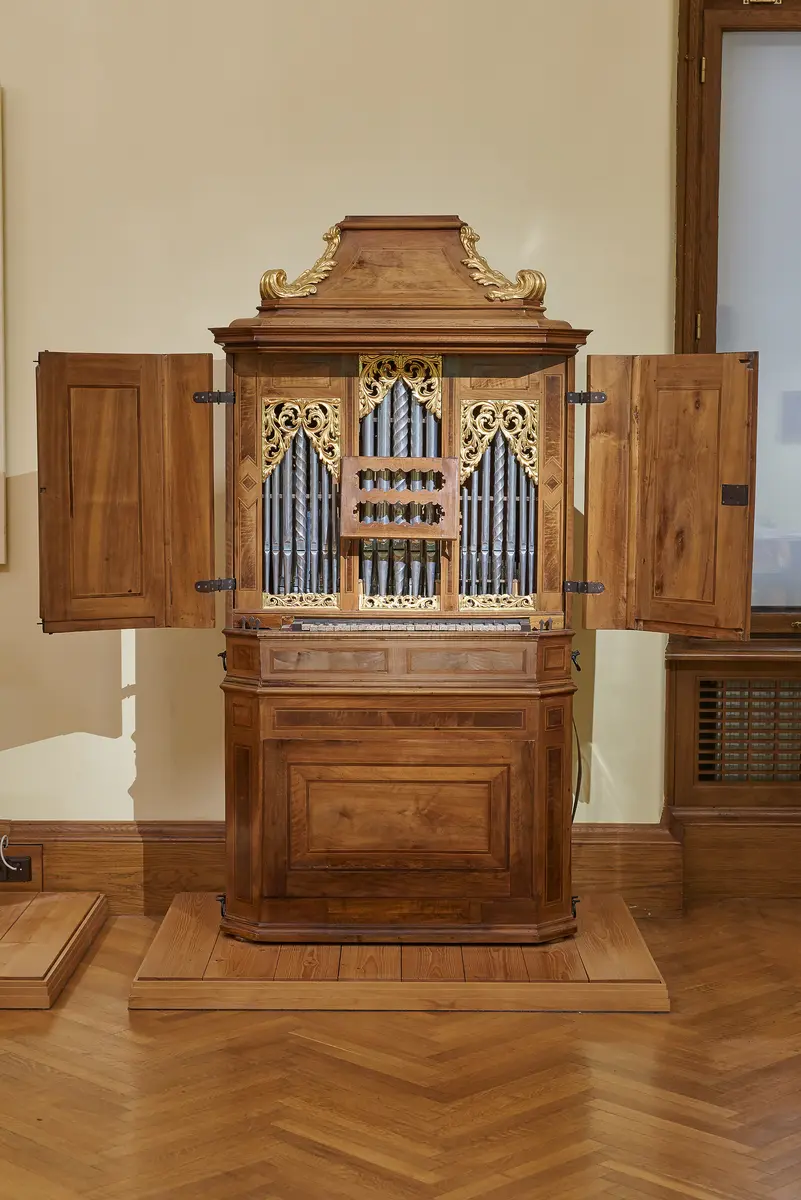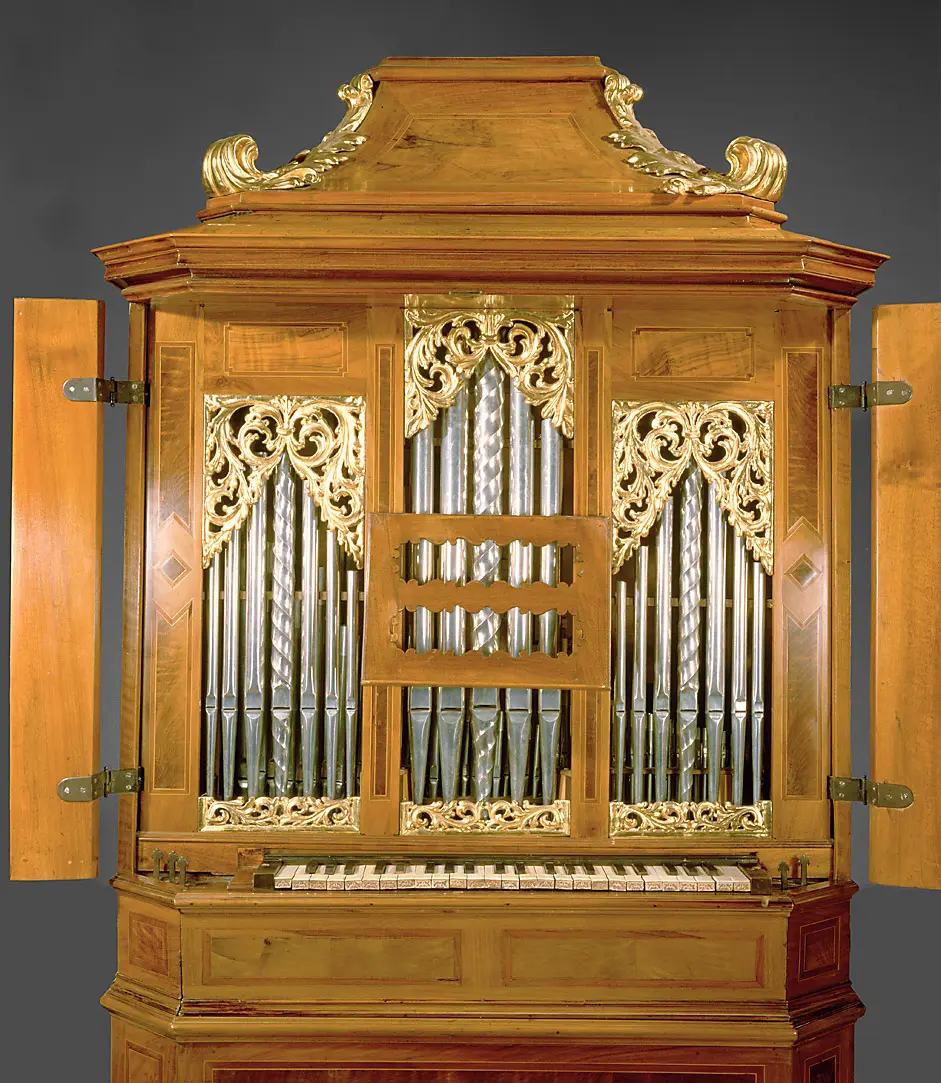Positive organ
Als Orgelpositive werden Instrumente eines Kleinorgeltyps bezeichnet, die meist im sakralen Raum, als Ersatz oder Ergänzung zu den großen Chororgeln, eingesetzt werden. Die Register, üblicherweise zwischen vier und sechs, haben zwar eine geringe Anzahl, bieten aber trotzdem genügend klangliche Möglichkeiten, damit ein Positiv sowohl solistisch als auch zur Begleitung eingesetzt werden kann. Der Tradition nach stammt dieses Positiv von Franz Lothar Walter aus dem Besitz Kaiser Josephs I. Es gelangte dann zu den Elisabethinerinnen in Wien, bei denen die Tochter des Kaisers als Stiftsdame lebte. Die Zuschreibung des fünfregistrigen Instruments an Franz Lothar Walter basiert auf einer Grafitstiftinschrift auf einem der Balgspäne, deren Echtheit allerdings nicht mit letzter Sicherheit bestätigt werden kann. (rh)
Literatur: Rudolf Hopfner: Meisterwerke der Sammlung alter Musikinstrumente, Wien 2004.
Attributed to:
Franz Walter (ca. 1656 Wien - 1733) DNB
Time:
beginning of the 18th century
Object Name:
Positive organ
Culture:
Austria, Vienna (?)
Dimensions:
1040 mm x 2130 mm x 660 mm
Copyright:
Kunsthistorisches Museum Wien, Sammlung alter Musikinstrumente
Invs.:
Sammlung alter Musikinstrumente, 544

